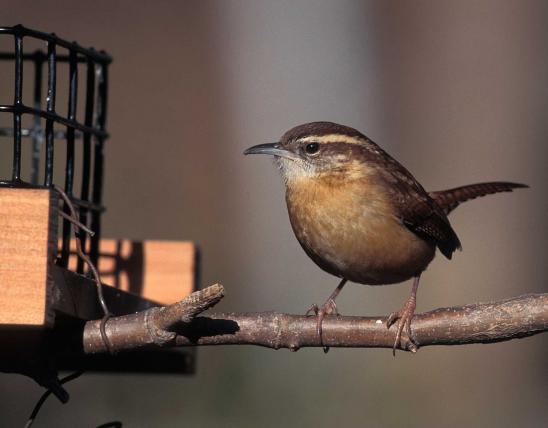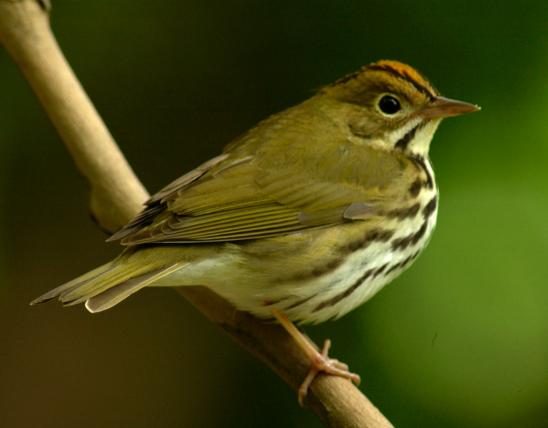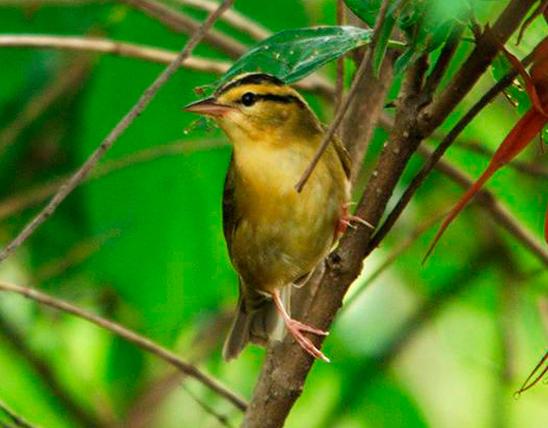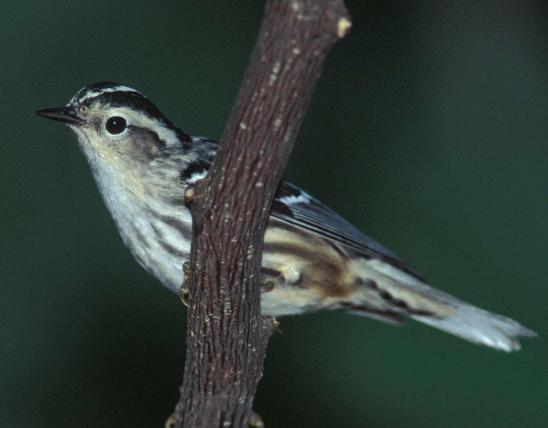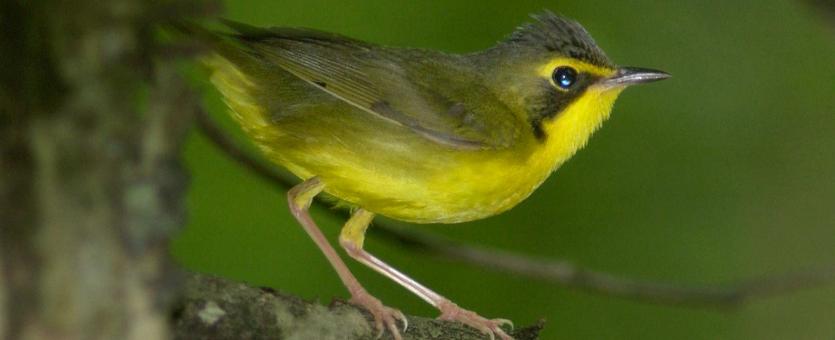
The Kentucky warbler adult male upperparts are olive, with a black crown, black eye line, and black moustache that descends from the back edge of the cheek onto the side of the neck (like “sideburns”). No wing bars, tail spots, or streaking. Underparts and “spectacles” are bright yellow. Female is similar but with less black on head area. This bird typically walks rather than hops, and it habitually bobs its tail. This species is almost always heard before it is seen. The song is a loud, two-syllable series, cherry-cherry-cherry-cherry, or, as Roger Tory Peterson described it, tory-tory-tory-tory. Call is a sharp tsup.
Similar species: The common yellowthroat male has a fuller black mask, lacking yellow spectacles around the eyes. The Canada warbler has a “necklace” of dark streaks. The yellow-throated vireo has yellow spectacles, but it also has white wing bars, plus the distinctive, slightly hooked bill of vireos. The Kentucky warbler’s song closely resembles the two-syllable song of the Carolina wren but is less musical. Its even volume distinguishes it from the ovenbird's song, which grows louder with each phrase. The northern cardinal has a two-note song that is similar, as well.
Length: 5¼ inches.
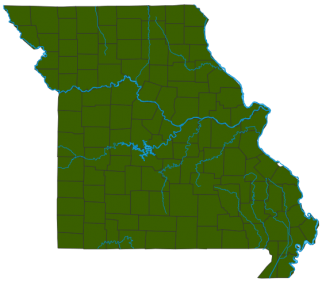
Statewide.
Habitat and Conservation
The Kentucky warbler's habitat is in moist woodlands and forests with dense tangles and shrubs in the understory beneath an overstory tree canopy. It forages on or near the ground, but singing males perch high in trees. Kentucky warblers occur in bottomland forests as well as in the dense vegetation of some upland streamside forests. Of the 19 warblers that breed in Missouri, the Kentucky is one of 4 most closely associated with large tracts of upland deciduous Ozark forest (the other 3 being the worm-eating and black-and-white warblers and the ovenbird). Thus Kentucky warblers are much less common in northern and western Missouri — but even there, they can be found in extensively forested areas. In those small forest patches, however, it is usually an unmated male and only occasionally a successful breeding pair.
Food
Forages on or near the ground for insects and spiders, often turning over leaves as it searches.
Status
Common summer resident in southern Missouri; uncommon in northern Missouri.
Life Cycle
Present in Missouri from mid-April through late September. Breeding range includes most of the eastern United States, though not as far north as the Great Lakes. Bulky cup nests are constructed of leaves, twigs, grass, and similar materials and are built on the ground or very low amid shrubby tangles in wooded areas, sometimes at the base of a tree. Clutches comprise about 4 or 5 eggs and are incubated for 12 or 13 days. After hatching, the young can leave the nest after only 8–10 days. Kentucky warblers spend winters in the Caribbean, Central America, and extreme northern South America. A Kentucky warbler can live to be at least 6 years old.
Human Connections
This is one of the many warblers that is more often heard than seen, making it a challenging and fun quarry for birdwatchers. Human-caused habitat loss and fragmentation have caused Kentucky warbler populations to decline. These birds also often collide into glass windows in buildings and are killed. Conservationists are working toward solutions for these problems, but they need support from all of us.
Ecosystem Connections
Kentucky warblers have declined due to habitat loss and fragmentation. Like other warblers adapted to large tracts of wooded habitat, it is particularly vulnerable to the nest parasitism of brown-headed cowbirds. When livestock or deer overgraze the understory of wooded areas, they deprive Kentucky warblers of the shrubby tangles they require for nesting habitat.


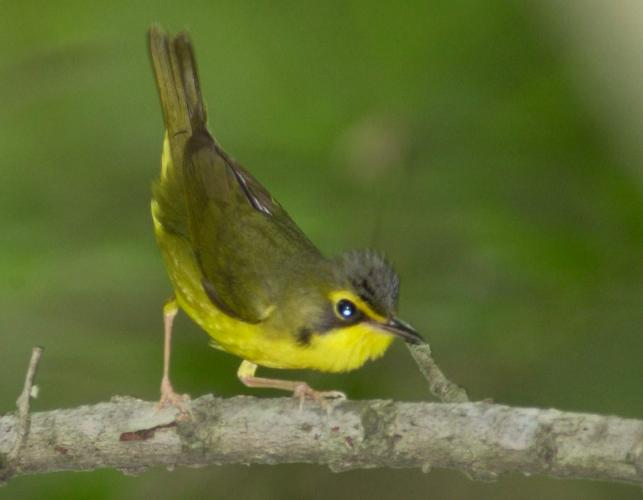

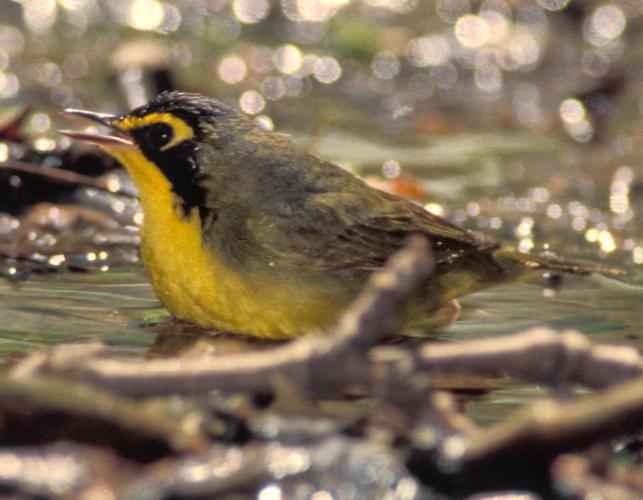


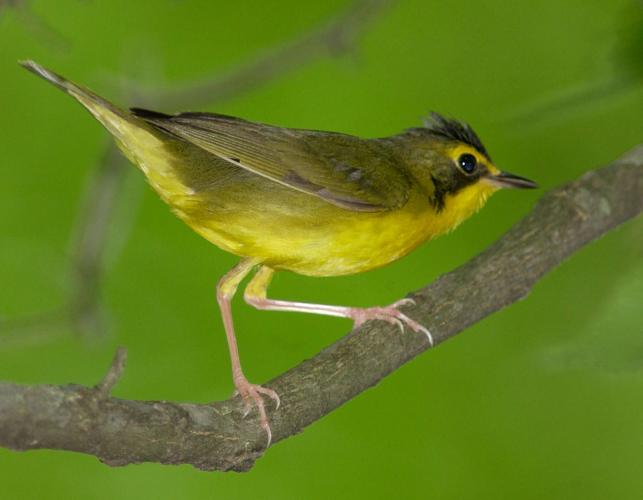


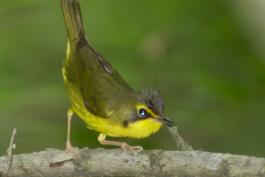

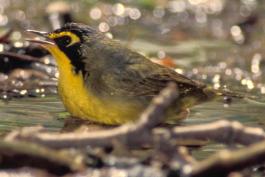



About 350 species of birds are likely to be seen in Missouri, though nearly 400 have been recorded within our borders. Most people know a bird when they see one — it has feathers, wings, and a bill. Birds are warm-blooded, and most species can fly. Many migrate hundreds or thousands of miles. Birds lay hard-shelled eggs (often in a nest), and the parents care for the young. Many communicate with songs and calls.























